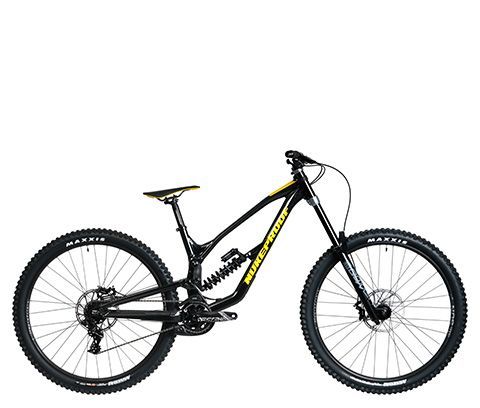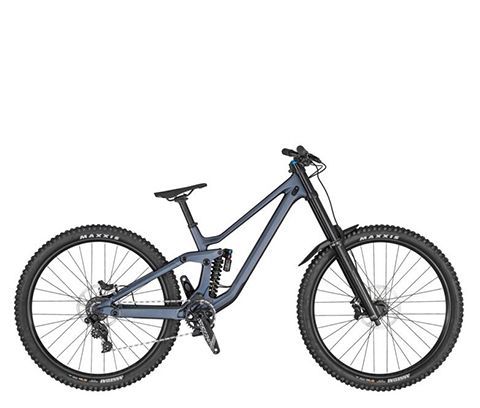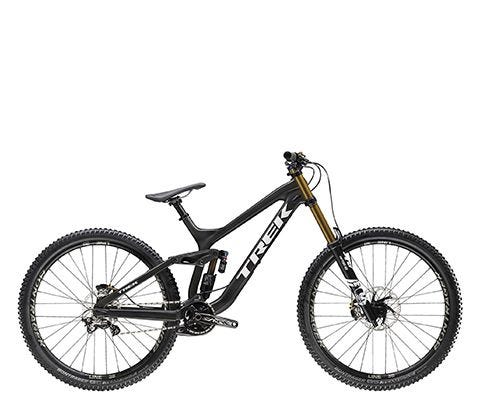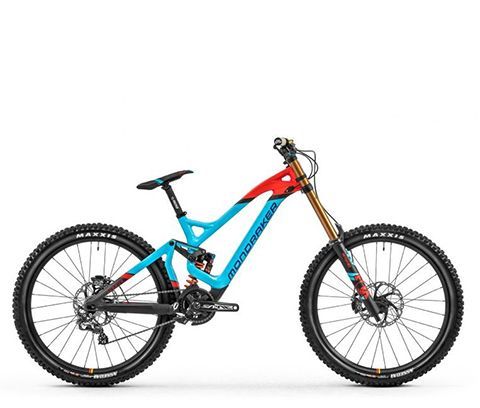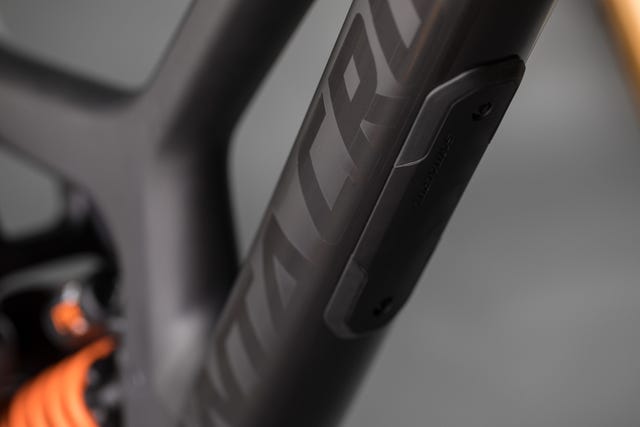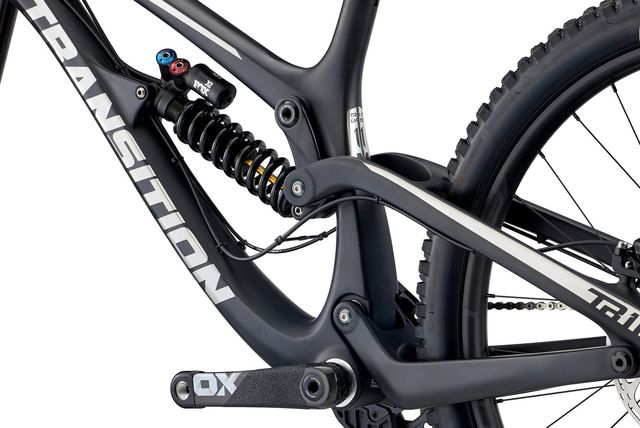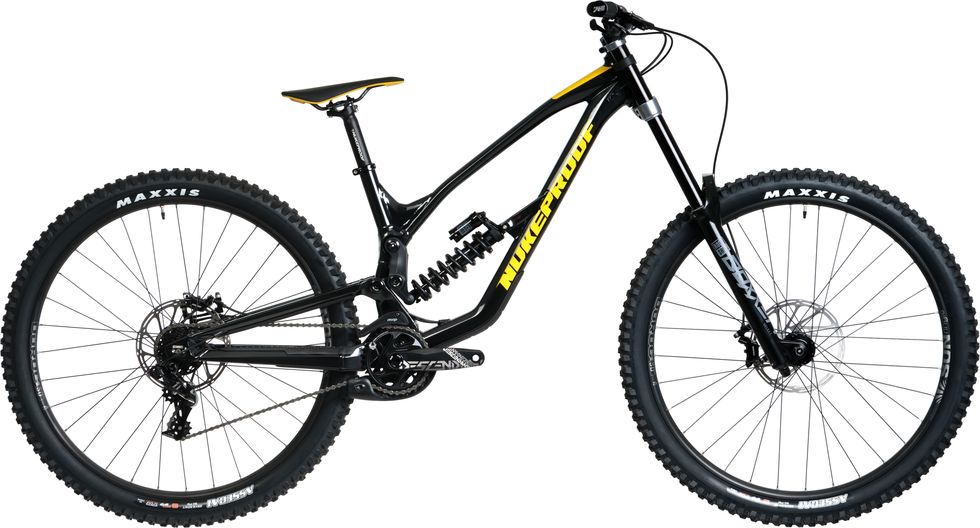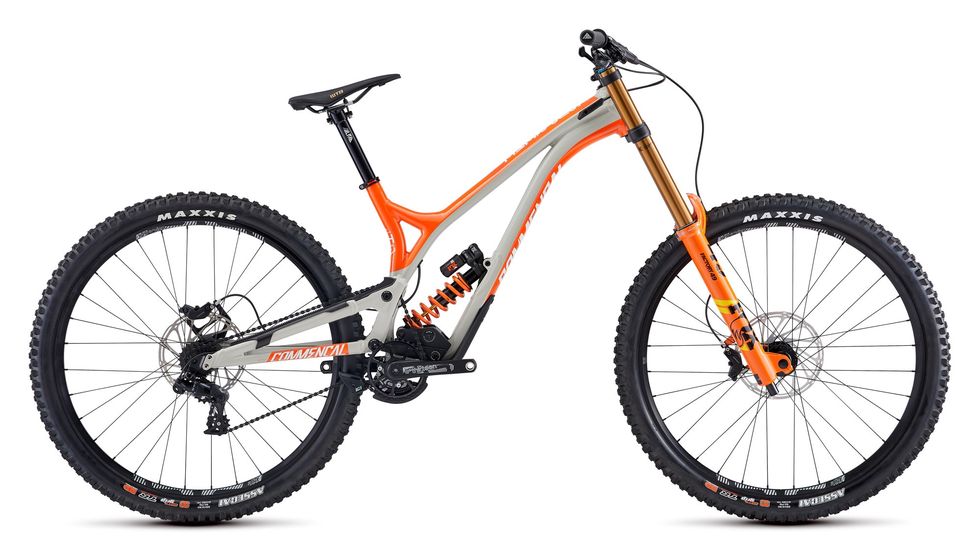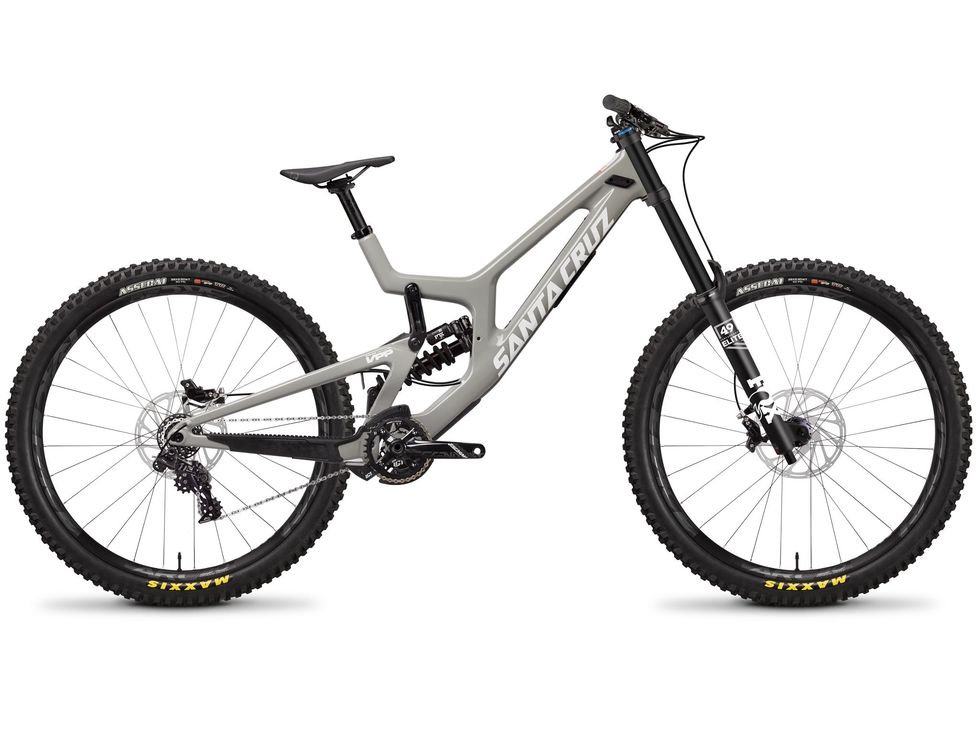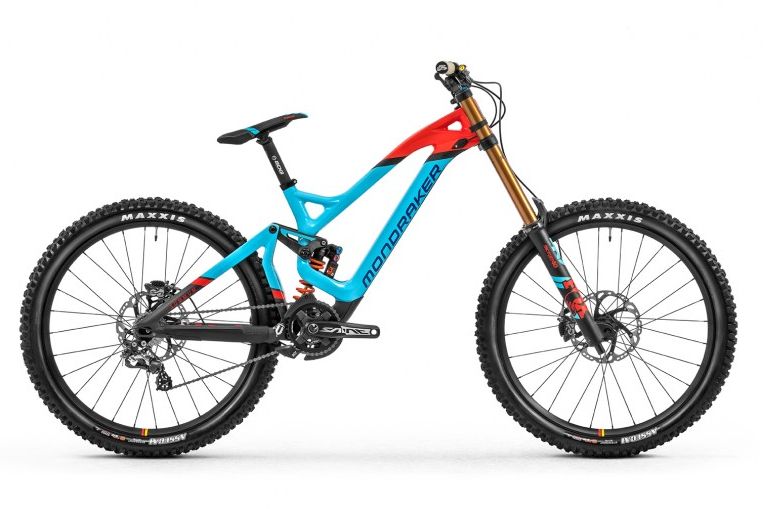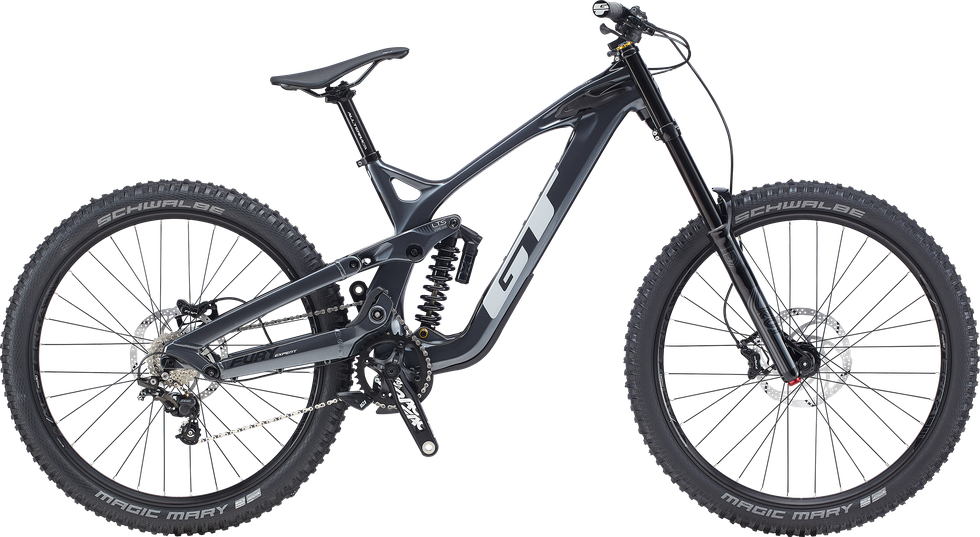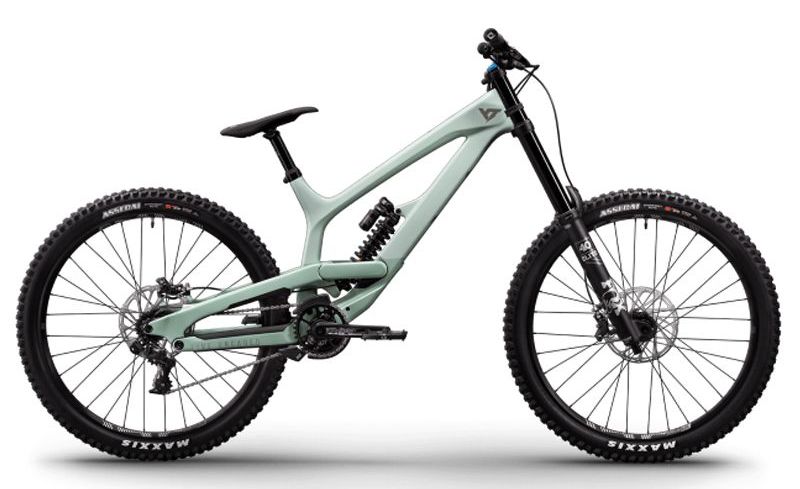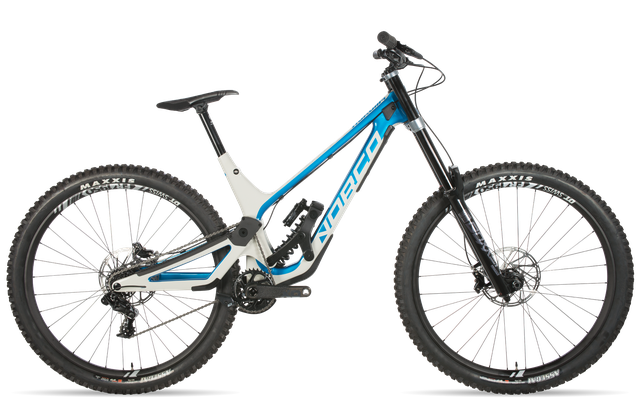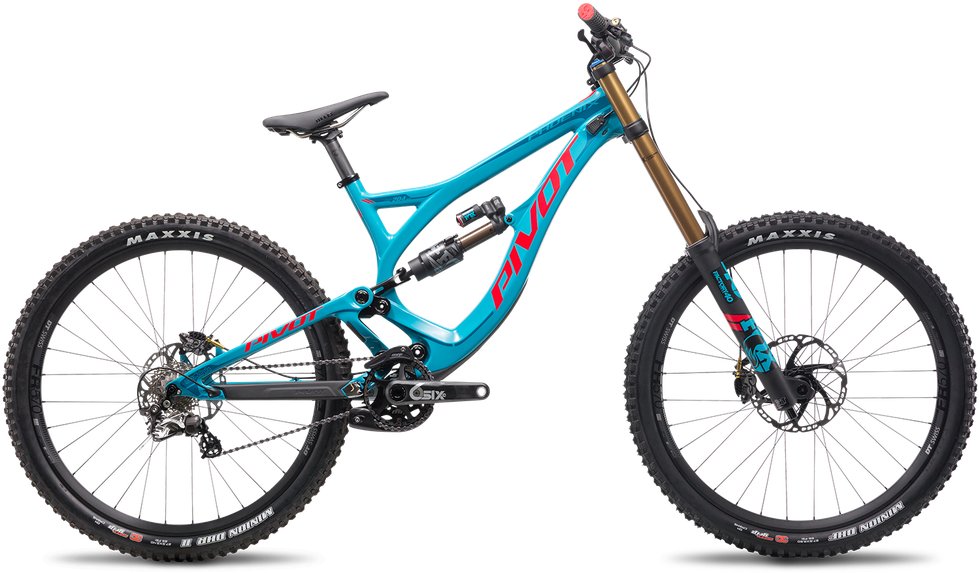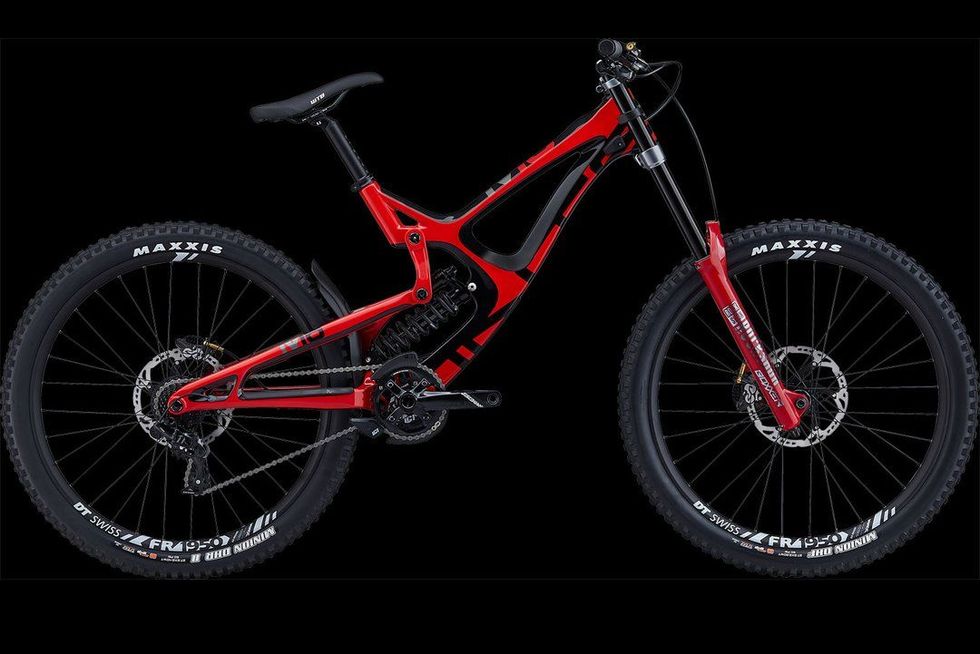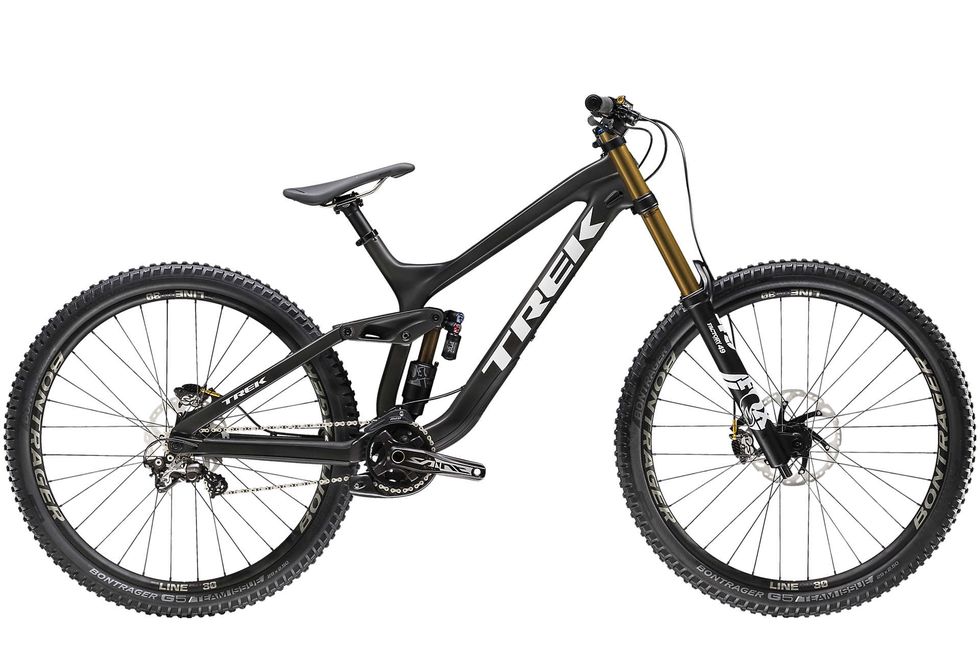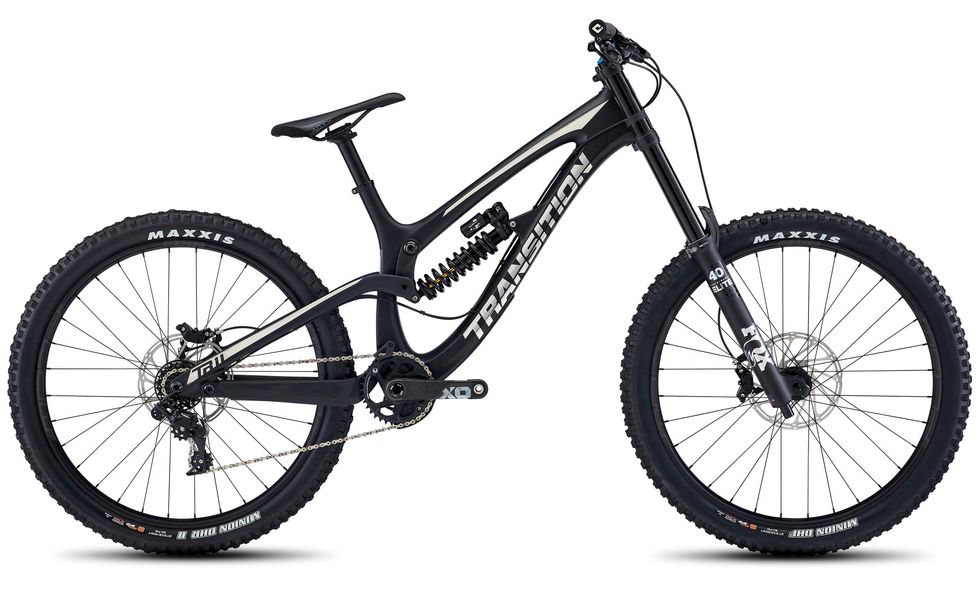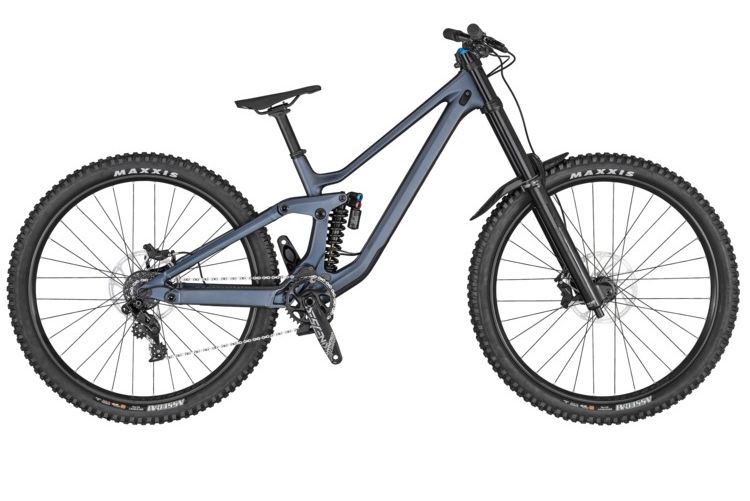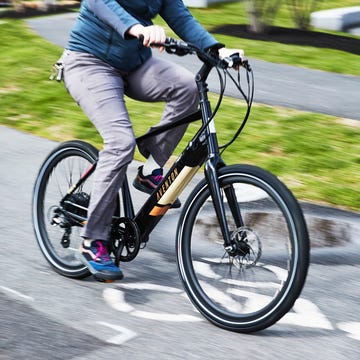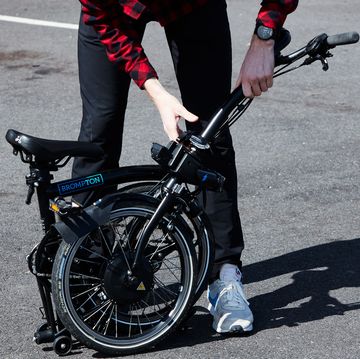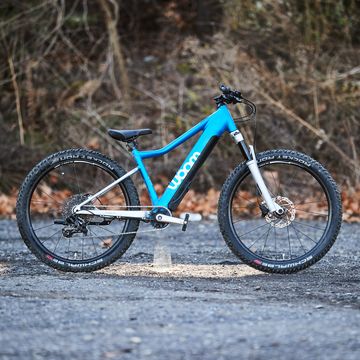Unlike XC, trail, and enduro rigs, downhill bikes need to be good at only one thing: going down. Climbing is typically achieved via a chairlift or in the back of a shuttle vehicle. But choosing the right DH bike isn’t so simple. Your budget, skill set, and intended riding style are all important factors when deciding on wheel size, frame material, geometry, and component spec, which all play a significant role in how a bike handles and how much it costs. Despite being comprised of highly specialized bikes for descending at ludicrous speeds, the DH market can be surprisingly diverse.
Check out our top five bikes here, then scroll down for buying advice and more in-depth reviews.
29er vs 27.5 Wheel Size
If you’re planning to pursue World Cup racing dreams, a low-slung 29er with a long wheelbase is probably the way to go. More capable at high speed, it will provide its pilot the poise to push past his or her comfort zone. But if spinning park laps and mastering airborne tricks is your primary goal, a 27.5-inch-wheeled steed with a shorter rear end will be more playful and poppy—and arguably more fun.
“If you’re just getting started with downhill or are focused on racing, I’d say look at a 29er,” affirms Dylan Howes, senior R&D engineer for Trek. “They’re fast, stable, and confidence-inspiring. But if you’re already experienced and are looking to hit jumps with some style, then a 27.5 may be the better choice. It’ll be easier to whip around in the air.”
Carbon Versus Aluminum Frames
If money is no object, carbon is the choice. Its lower weight enhances acceleration, and the composite material does a better job of absorbing vibrations. “You can feel it more than on a trail bike because you’re going faster and hitting obstacles harder,” explains Howes. “I also feel like carbon bikes return energy better, so you can rocket out of corners and maintain momentum.”
But durability is another important factor, explains Nick Anderson, lead engineer for Santa Cruz. “Typically aluminum can handle a baseball-size rock strike to the down tube and still be fine,” he says. “With carbon, not so much. That can be an expensive problem—and carbon frames are already more expensive than aluminum ones.”
Coil Versus Air Shocks
Outside of wheel size, this is arguably the most hotly debated topic in the downhill bike arena. While it used to be that coil shocks were the overwhelming choice for DH sleds, air shocks have begun to catch up in recent years. Generally speaking, coil shocks are more sensitive off the top and provide more consistent performance, especially during extended descents. But they are also heavier and you can’t tune them as finely as their air shock brethren.
“Coils are more reliable and have better initial sensitivity, so the suspension will have a better overall feeling,” says Anderson, noting that Santa Cruz sells only DH bikes spec’d with coil shocks. “From a racing standpoint, riders only run air shocks to solve a problem, say if the frame’s kinematics aren’t progressive enough to provide adequate bottom out resistance.”
But Trek’s Howes points to air shocks’ adjustability as the most critical feature. “It’s so much easier to tune an air shock because you can add or take away volume spacers,” he says. “We design and spec our bikes for air shocks and feel like, for the average rider, they are definitely the way to go because of that adjustability and progressivity to better handle big hits.”
How We Picked
Now that we’ve covered some of the basics, it’s time to look at our top 13 downhill bikes. We formulated this list by surveying the market, reading reviews on other sites, and observing consumer reviews from around the web. If at all possible try before you buy, as a test ride is always the best way to make an educated decision.
Nukeproof Dissent 920 Comp
Nukeproof’s new Dissent 920 Comp is an ideal way to get into downhill riding and racing. The sub-$4,000 price affords you a robust aluminum frame, DH-tested 200mm RockShox Boxxer Select R fork and RockShox Super Deluxe Coil Select R shock, and a seven-speed SRAM GX drivetrain. The Dissent is highly adjustable, too. A main pivot flip chip provides four main pivot positions, altering the progression of the suspension, the company says. There’s also a three-position chainstay chip that allows you to adjust your chainstay length by 10mm (in increments of 5mm). Internal cable routing and Boost rear spacing bring this Nukeproof up to date with industry standards, making it a competitive ride for years of DH ambition.
Commencal Supreme DH 29
The Commencal Supreme DH 29 occupies a prominent place in mountain bike history as the first complete production-ready, 29-inch downhill bike to hit the consumer market. It promptly sold out two production runs, proving that big-wheeled DH bikes were here to stay. For model year 2020, the bike of World Cup superstar Amaury Pierron continues to rely on a high pivot point (HPP) suspension setup whose primary aim is to improve shock absorption and vibration damping, while also bolstering critical rear wheel traction. Component highlights of this race-ready machine include a top-of-the-line Fox Factory DHX2 shock and a Fox Factory 49 Float fork (both with 200mm of trail-smoothing travel), SRAM’s well-regarded Code R brakes with 200mm rotors front and rear, and grippy Maxxis Assegai 29x2.5 tires.
Santa Cruz V10 S 29
Arguably the most famous downhill race bike of all time, the V10 was first launched back in 2002 and has accumulated numerous World Cup race wins while being piloted by the likes of Steve Peat and Greg Minnaar, among others. It was also one of the first DH platforms to make the jump to 29er wheels, which have since become the norm at the sport’s highest level. Today, you can get a V10 with 29er or 27.5 hoops, allowing riders to choose based on height and riding style. Dedicated park rats may lean to 27.5 wheels, but the pick here is 29er for its all-out speed and rollover capability. The V10 S 29 comes with Fox Performance Elite suspension and SRAM GX drivetrain components to help keep cost in check. And like the more expensive build options, this bike features adjustable chainstay length to enhance front/rear balance, a lower suspension leverage rate to improve shock performance, and internal derailleur cable routing through the swing arm to protect the housing from damage.
Mondraker Summum Carbon Pro Team
If money is no object and you want one of the longest downhill bikes available, put the Summum Carbon Pro Team on your short list. Highlights of this five-figure bike include a full carbon 27.5 frame with a lengthy 1,250mm wheelbase in size large, and Fox Factory suspension front and rear, including the DHX2 coil shock with a superlight steel spring. The brakes and drivetrain are Shimano Saint, with DT Swiss and Maxxis getting the nod for wheels and tires. Add it all up and you have a proven race steed, as witnessed by the Summum Carbon Pro Team’s sweep of the men’s podium at the downhill world championships at Val Di Sole, Italy, in 2016.
GT Fury Expert
Priced for the privateer racer on a budget, the GT Fury Expert delivers nearly all the performance of its more-expensive Fury Carbon Team counterpart, but for half the price. Available in 27.5- and 29-inch wheel configurations, the Fury platform utilizes what GT calls its LTS four-bar suspension system, which is designed to deliver ride-smoothing bump absorption, predictable braking, and minimal pedal feedback. This aluminum frame build rocks a solid X-Fusion RV 1 fork and X-Fusion Vector Coil shock, TRP Slate T4 hydraulic disc brakes, and toothy Schwalbe Magic Mary tires. And it’s available in four sizes, increasing the odds you’ll find a perfect fit.
YT Tues 29 Pro
Another dedicated downhill race bike, the Tues Pro places emphasis on speed and stability above all else. Its slack 63.5-degree head-tube angle, low bottom bracket, long chainstays, and sprawling wheelbase help keep you planted and in control even when riding on the ragged edge. The V4L four-bar suspension is superb at soaking all manner of bumps big and small. You also get an impressive component package, including Fox 40 Float Performance Elite fork and Fox DHX2 Factory shock, SRAM X01 drivetrain, and SRAM Code downhill-specific brakes. That’s a lot of value for a bike in this price range.
Norco Aurum HSP C1
Available with 29- or 27.5-inch wheels, the Norco Aurum HSP C1 features a full carbon frame and utilizes a high single-pivot suspension setup where the rearward axle path moves the wheel in the direction of the impact, helping maintain momentum through rough terrain. It also has an idler pulley that helps isolate drivetrain forces, improving small-bump compliance while minimizing pedal kickback. This top-flight build includes a RockShox Boxxer Ultimate fork and a RockShock Super Deluxe Coil Ultimate shock, SRAM Code RSC brakes, DT Swiss FR1950 wheels, and Maxxis Assegai 29x2.5 tires.
Pivot Phoenix Pro Saint
One of the longest and lightest bikes in this roundup, the Phoenix Carbon has a 1,264mm wheelbase and comes in under 35 pounds for size large. (And that’s with tubes and beefy alloy wheels.) Wheel size is 27.5, meaning this is a bike that can be raced one weekend, and then whipped around the bike park the next. The DW-link suspension soaks up big hits—and actually pedals reasonably well. Head angle is a super slack 62.5 degrees, and Pivot offers an angle-adjusting headset that allows you to tweak it 0.75 degrees in either direction. Spec highlights of the Shimano Saint build include Fox Factory fork and shock and rowdy-ready DT Swiss FR560 aluminum wheels.
Intense M16 Pro Build
The eye-catching, sculpted lines of the M16 have made it one of the most sought-after downhill bikes. Unique features include an adjustable dual-link suspension that allows for two travel settings: 214mm and 241mm. This 27.5-wheeled trail smasher is also exceptionally light thanks in part to its full carbon design, including the rocker links, which are more typically made from aluminum. The 200mm RockShox BoXXer fork and Super Deluxe Coil World Cup shock are other highlights, and SRAM XO1 drivetrain and Shimano Saint brakes complete this race-ready package. At the time of this writing, Intense is including a set of e*thirteen Lg1R enduro carbon race wheels with every bike sold from its website.
Trek Session 9.9 29
With a claimed weight of 34.5 pounds—with tubes—this is one of the lightest 29er DH bikes around. The frame’s adjustable Mino Link allows you to toggle between a 62.1- and 62.6-degree head angle, while also changing bottom bracket height by 10mm. Wheelbase is 1,268mm for size large, and it has 200mm/210mm of front and rear suspension. This is a top-of-the-line bike, and the parts—Fox Factory air suspension at both ends with four-way adjustable damping, Shimano Saint drivetrain and brakes, MRP carbon chain guide, and a Bontrager carbon handlebar—reflect that position.
Transition TR11 Carbon XO1
With multiple World Cup podium wins under the expert guidance of Tahnee Seagrave, the TR11 has proven itself as one of the top downhill race bikes on the market. Long and low geometry makes it stable and predictable at speed, while the carbon frame and upper-tier SRAM XO1 build help keep this 27.5 track charger’s weight in check. The frame also has integrated molded-rubber down-tube and chainstay protectors to quiet chain slap and guard against rock strikes. Other spec highlights include a Fox DHX2 Factory shock, Fox 40 Grip 2 Performance Elite fork, Maxxis Minion 3C DH tires, and SRAM Code RSC brakes.
Scott Gambler 910
The Gambler’s mixed-material frame—a carbon front with an aluminum rear—helps keep vibrations in check and prices down. It offers 200mm of travel, but it’s this bike’s wide range of adjustability that truly stands out. It can accommodate 27.5- or 29-inch wheels, the chainstay length can be set at either 439mm or 435mm, and there’s a flip chip that adjusts bottom bracket height and shock progression, allowing riders to pick the best setup for their style or track conditions. The head-tube angle is either 62.9 or 63.2 degrees, depending on the flip chip orientation. When you’re tackling gnarly steeps, Scott recommends you shorten the chainstay, slacken the head angle, and make the shock more progressive by using the lower chip setting. But if the day’s terrain is flatter, a longer chainstay, less slack setup, and higher BB is best for maintaining flat-out speed.
Specialized Demo Expert 29
The latest Demo features a new take on Specialized’s signature four-bar suspension design. This iteration has a more-rearward axle path, claimed to improve the bike’s ability to carry momentum over square-edged bumps. This characteristic was requested by Specialized-sponsored world champion Loic Bruni. It seems to work, as Bruni has been on fire in 2019. This suspension system is also on the new Enduro, which we found floated through rock gardens with no hang-ups. The Demo Expert model features an aluminum frame with increased reach (up 20mm compared to the previous version) hung with RockShox suspension, a SRAM GX drivetrain, and Code R brakes.

A former Division 1 runner, Dan grew up riding fixies and mountain bikes and now reviews everything from performance running shoes to road and cross bikes, to the latest tech for runners and cyclists at Bicycling and Runner’s World.
